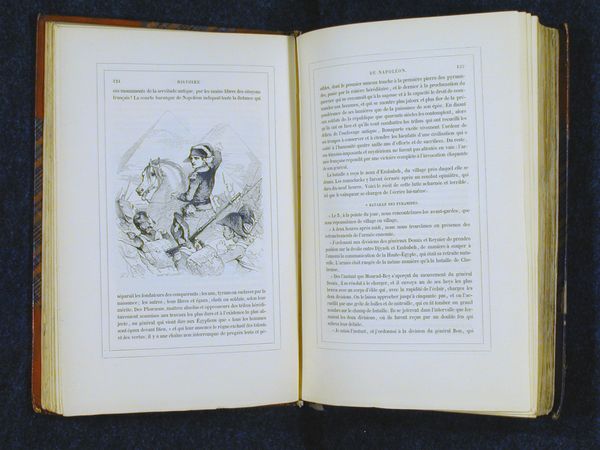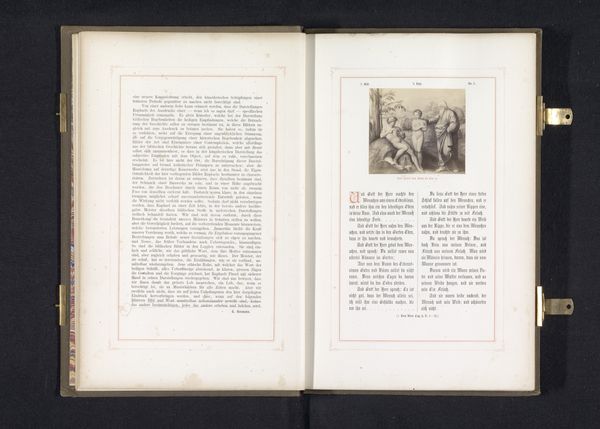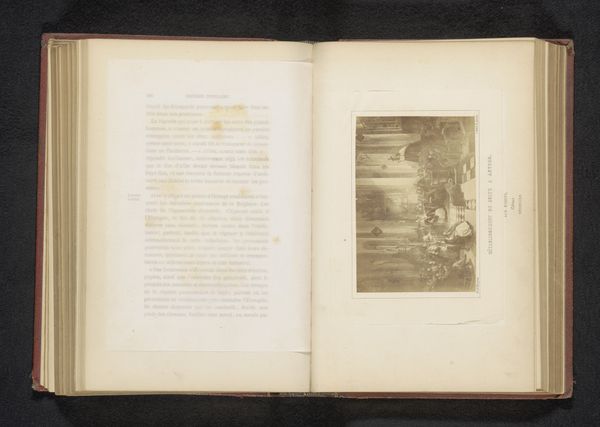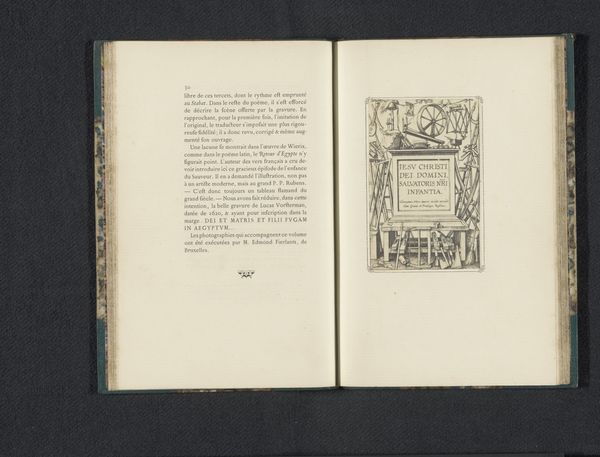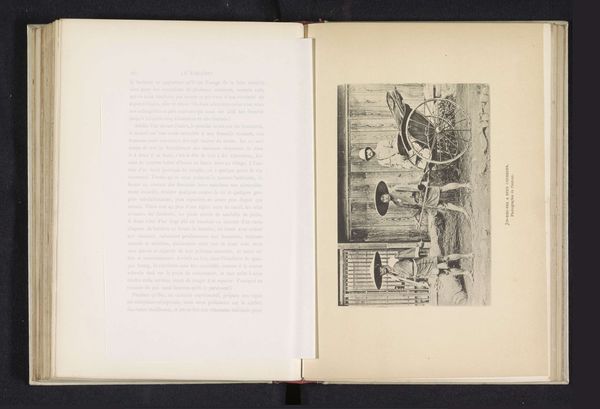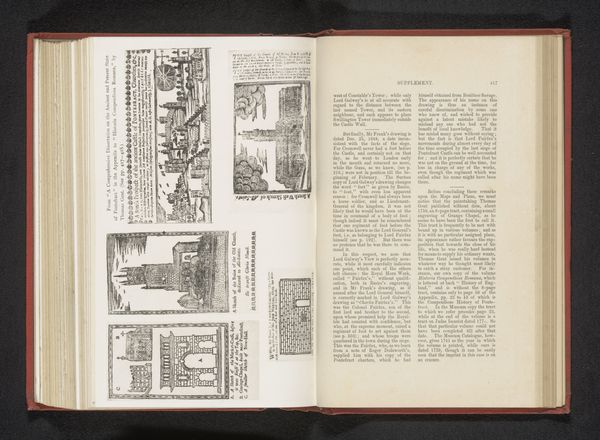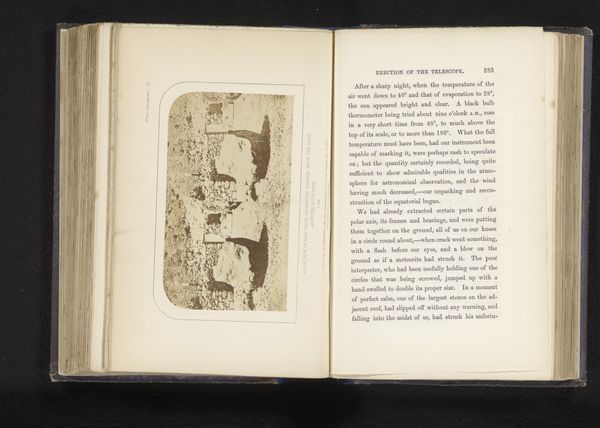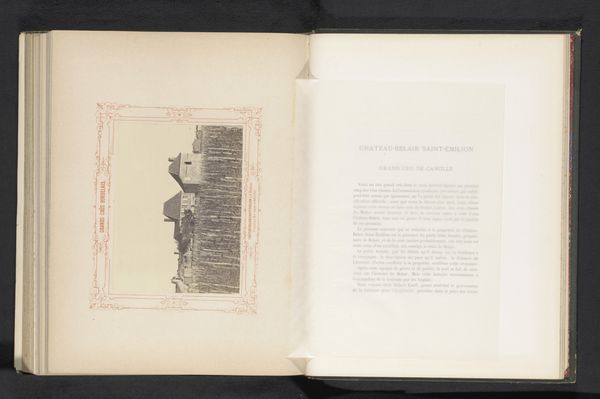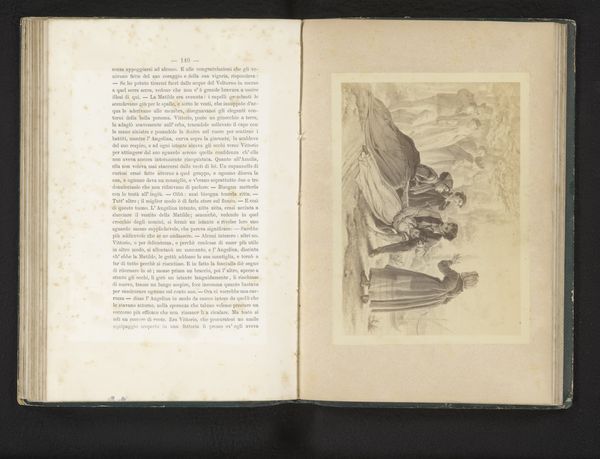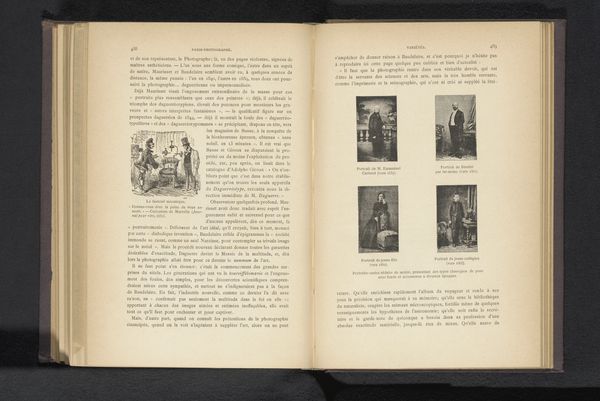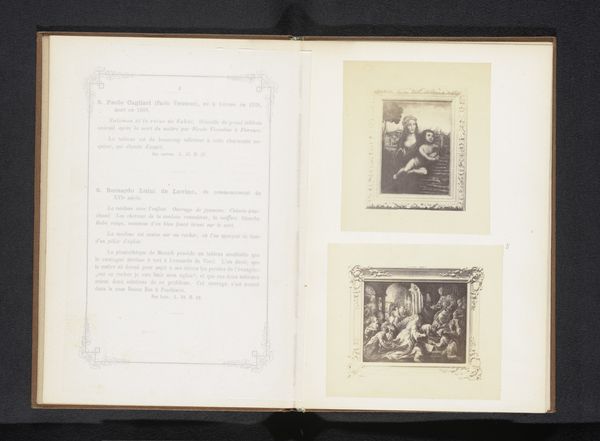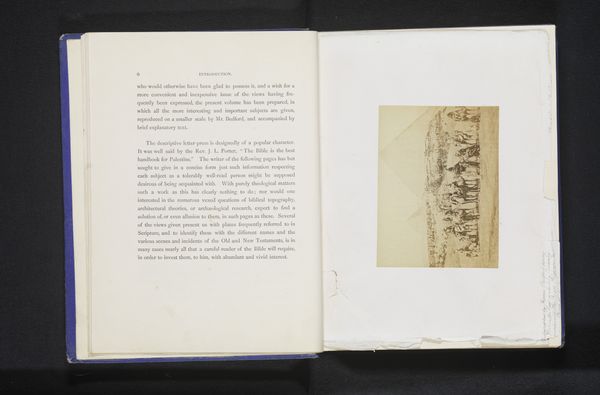
Le Diable a Paris. . . Paris et Les Parisiens, Vol. I-II 1845
0:00
0:00
drawing, lithograph, print
#
drawing
#
16_19th-century
#
lithograph
# print
#
french
#
book
#
france
#
genre-painting
Copyright: Public Domain
Curator: I find myself drawn into this lithograph. It appears to be an open book with an illustration depicting cross-sections of various floors in what might be an apartment building or grand house. Do you notice the detailed scenes of daily life on each level? It's from Paul Gavarni's, "Le Diable a Paris... Paris et Les Parisiens, Vol. I-II," dating back to 1845. Editor: It's a fascinating visual study. I'm immediately struck by the feeling of compressed space and frenetic energy. The illustration is busy; each floor almost acts like a stage presenting these individual scenes. How do these images work to depict Parisians or evoke cultural meaning? Curator: Each floor seems to reflect a certain social class, activity, or personal drama happening within the domestic sphere. Observe the clothing, decor, and interaction among the characters, especially their subtle symbols of status, wealth, and domestic habits, speaking to wider issues within Parisian society at the time. Do you notice any patterns of symbolic activity in these scenes? Editor: The continuous staircases certainly bind each floor together, unifying society with clear visual signifiers that imply vertical social movement and proximity to others. However, a sort of theatrical staging also dominates; a constructed gaze implies satirical observation by both Gavarni, and ourselves. This visual framework encourages audiences to see these depictions as caricatures as much as accurate representations. The devil you know… Curator: A diabolical overview of French life for the amusement of readers, perhaps? But, let's also not underestimate the cultural significance of these scenes, they are invaluable records of dress, interior design, and social rituals within 19th-century French society. Beyond caricature, Gavarni gives us cultural continuity. Editor: That is certainly important, but the context and original intent is critical too. Understanding its relationship to Parisian literature and satire is the key to unraveling a complete picture. The question of accuracy may matter less than understanding the art's participation in constructing certain cultural stereotypes. Curator: It's true that seeing them through that interpretive lens adds layers of meaning. It becomes more than just documentation. We can read cultural aspirations, fears, and judgements within these images too. Thank you for illuminating the deeper contexts that really enrich this artwork. Editor: It’s equally valuable to have noticed the quiet cultural traditions reflected here and that continue to live on across generations through images such as this. Thanks for this iconographic insight.
Comments
No comments
Be the first to comment and join the conversation on the ultimate creative platform.
